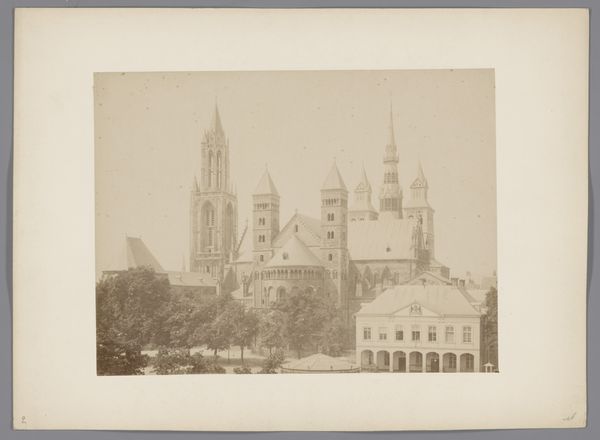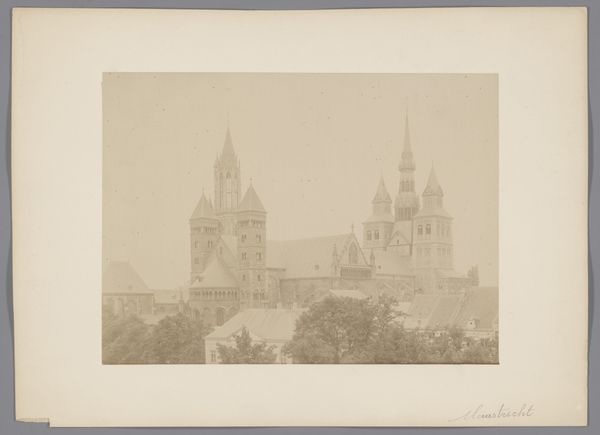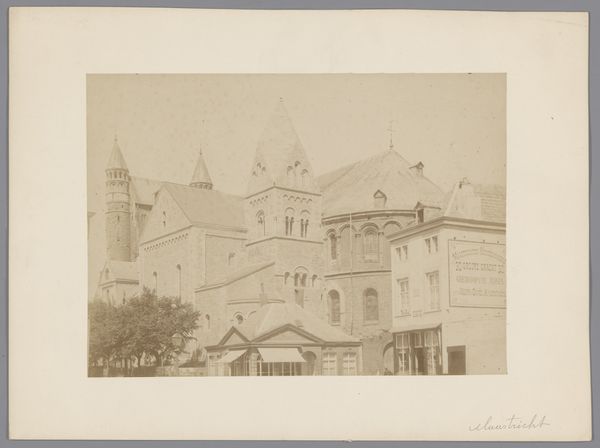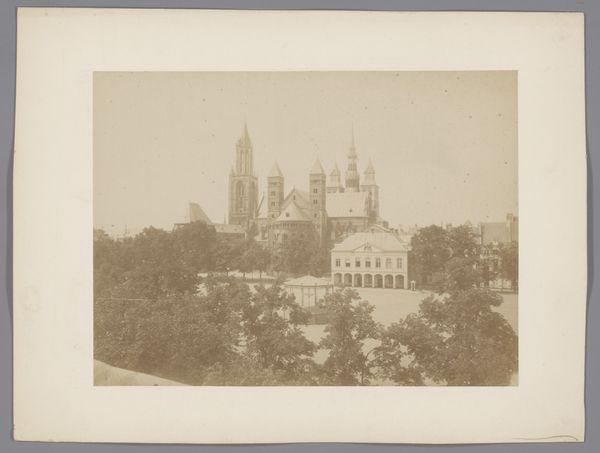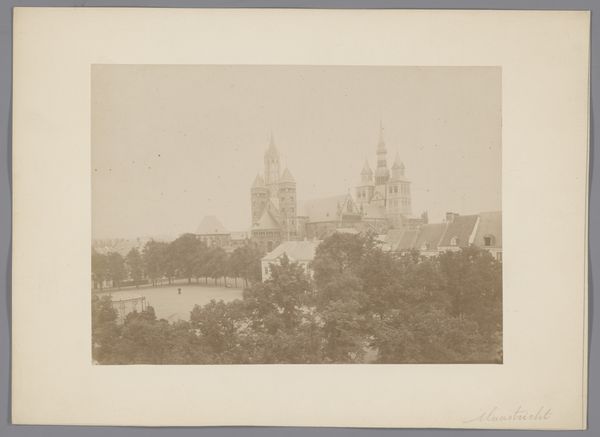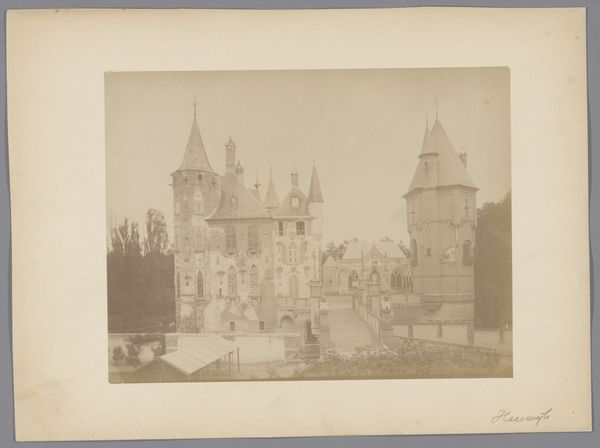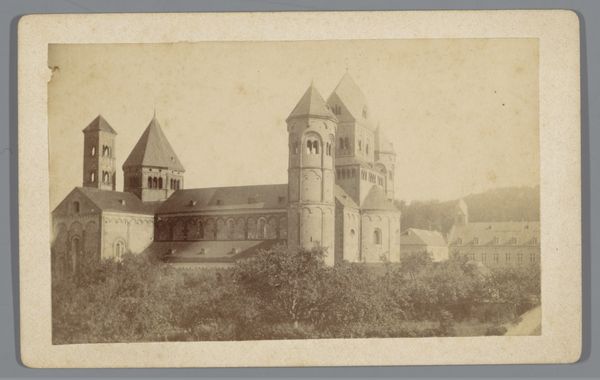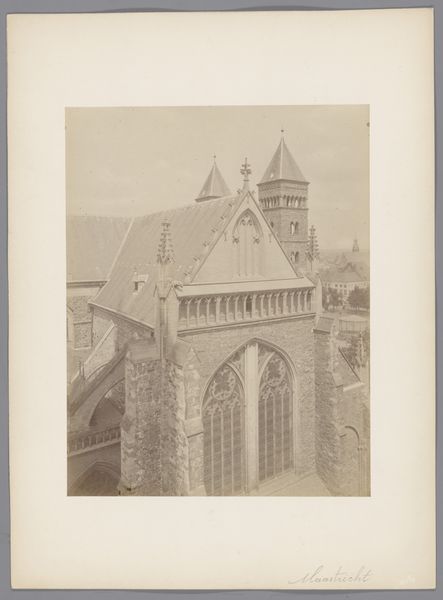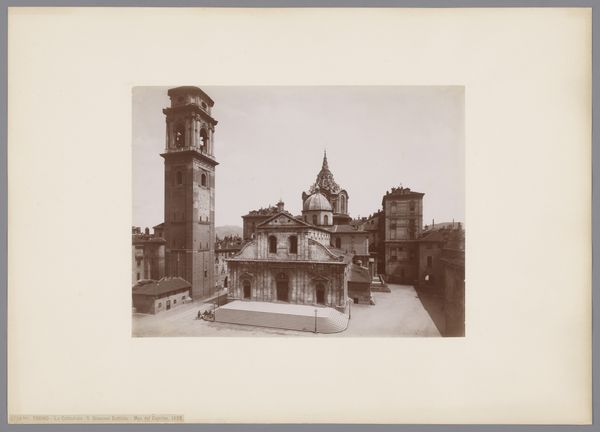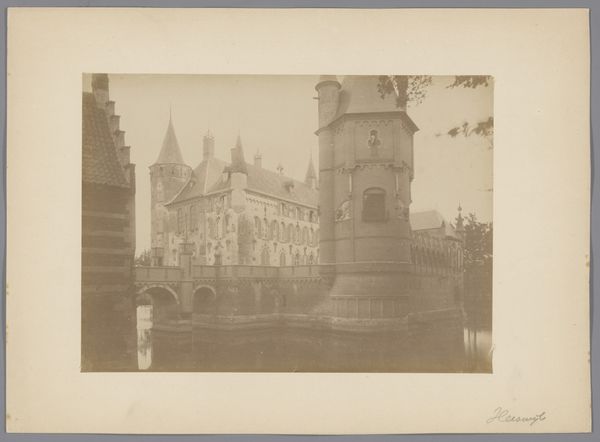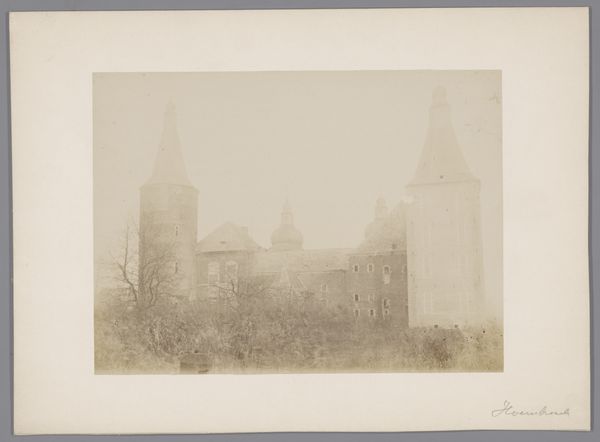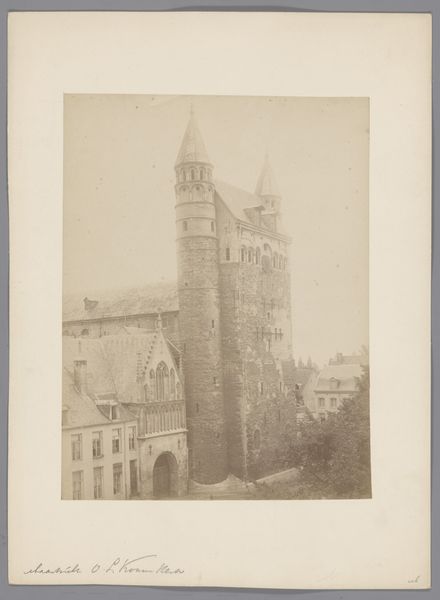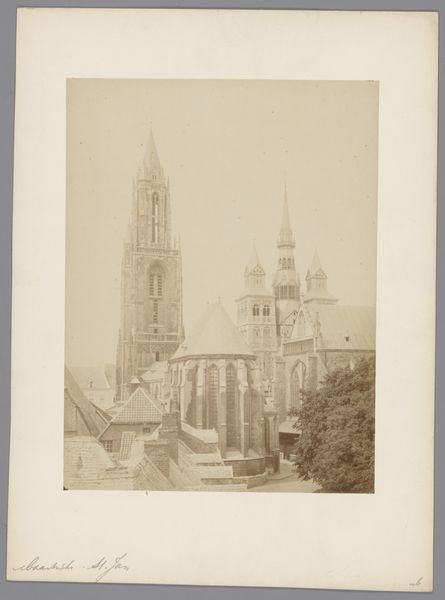
Dimensions: height 166 mm, width 237 mm
Copyright: Rijks Museum: Open Domain
Curator: This albumen print captures the southeast side of the Sint-Servaasbasiliek in Maastricht. It was created in 1893 by an anonymous photographer working with Monumentenzorg, the Dutch heritage organization. Editor: It's quite striking. The tonality is so soft, almost ethereal, giving the heavy stone structure a light, floating quality. The scale feels immense, even in this smaller print. Curator: Albumen prints like this one were common for architectural documentation in the late 19th century. The process itself—coating paper with egg white, then sensitizing it with silver nitrate— allowed for detailed reproduction, perfect for capturing the basilica's intricate Romanesque features. The production required careful lab practices and skilled hands, so this object represents a serious investment of labor. Editor: And that investment served a very specific purpose. The basilica, of course, isn't just a building. It's a symbol of power, faith, and the city’s long history. Being photographed for Monumentenzorg signifies its importance to the Dutch national identity being constructed at that moment, especially during the rise of heritage preservation efforts. This official imagery becomes a tool in shaping the public perception and valuing of architectural history. Curator: Precisely. Considering the print itself— the materiality—reveals clues, doesn't it? The tones tell us it's a direct product of its time, yet those materials also played into the romanticizing architectural aesthetic and its symbolic value within Dutch society at that time. I see that relationship as essential to considering the broader historical and socio-political context. Editor: And the survival of this image demonstrates the power of institutions to curate cultural memory. It speaks to a careful construction of our image of the past, what aspects were valorized and meticulously captured. This photograph serves to amplify it as a powerful narrative today. Curator: Absolutely. Thinking about the albumen print itself—a specific and now fragile materiality— alongside its historical and sociopolitical import allows a more complete reading. Editor: Yes, these intersecting angles reveal this historical imagery, the built form and image production itself, as active processes that are still relevant today.
Comments
No comments
Be the first to comment and join the conversation on the ultimate creative platform.
